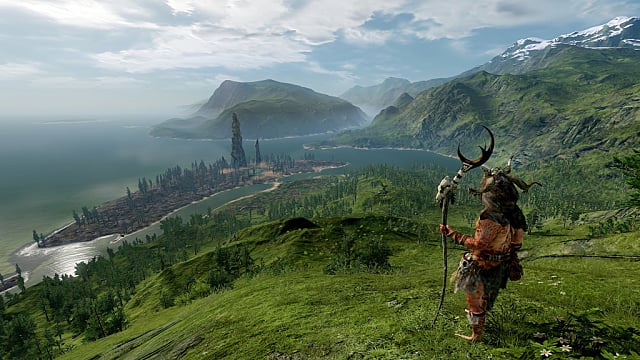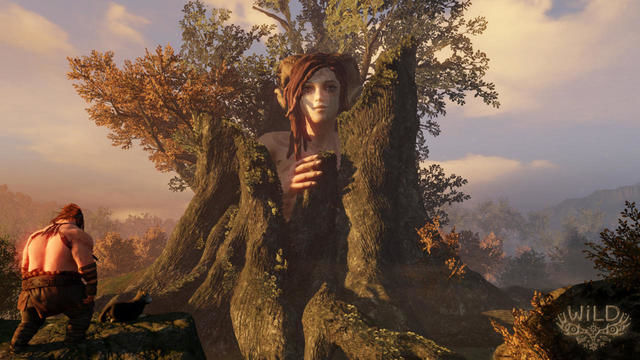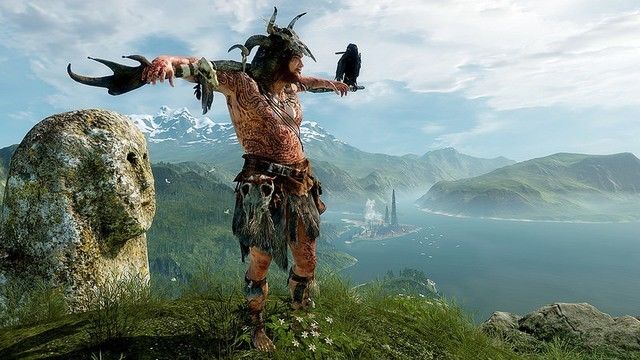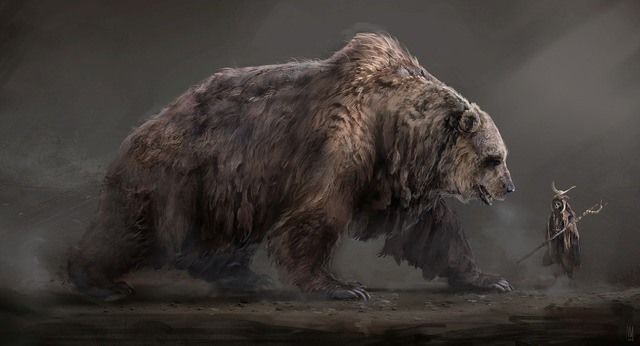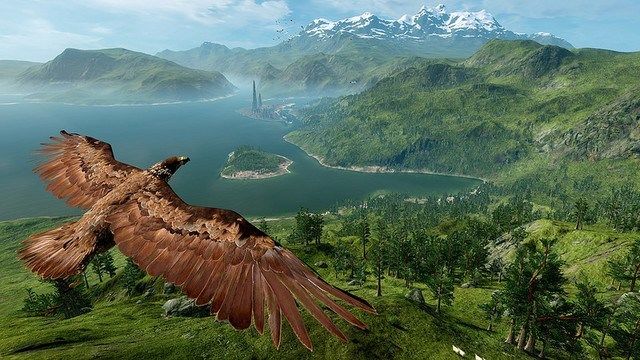From passion to project
Ancel shared a bit about his inspiration for WiLD, reminiscing fondly about all the time he spent in nature in his youth. The drive to use this experience has been in the back of his mind for years, especially through periods like Rayman’s development where he worked on games that played off the gravity of the environment.
In order to share his inspiration with the rest of the Wild Sheep team, Ancel gave his fellow developers homework. He instructed the team to experience nature; to feel, smell, and experience the wild. Perhaps Ancel felt they needed a fresh reminder of the beauty of what he calls “the wild world” and a taste of the passion that drives him.
Celine Teller, art director and CEO, related her own desire to visit locations both natural and ancient for material on which to build the characters and environment of WiLD. Bringing physical items into the office became part of the project, and not merely for inspiration. The team uses photogrammetry to build 3D models directly from photographs. This process measures objects in photos and can even be used to track a path of motion on said object. Ancel emphasized the sense of reality this brings to the project.
Wild Sheep seems infected with Ancel’s passion. Lead game designer Swann Martin-Raget finds nature to be an exciting and consistent source of inspiration. He stated that new ideas for animals and their behavior come to the team regularly with nature constantly feeding their imagination.
The gist of the experience
Players control a shaman, either male or female in-game but exclusively male in the trailer, and venture out into the untamed wilderness. No signs of modern technology can be found in this land where tribes and the natural world still rule. The trailer highlights one possible reason for the shaman’s immediate journey: to find a remedy for poison, thus saving a fellow tribesman’s face from pained contortion.
Despite this time-reliant task, Ancel claims that WiLD’s open world emphasizes freedom from rigid, inflexible missions. The game will not provide players with a checklist of what to do and a guide on how to accomplish any goals. Players must make their story unique with personal objectives, selecting the most effective tools along the way in whichever manner they see fit. Ancel summarized the intent concisely: “We wanted choices.”
I, for one, choose to look epic.
Technical director Christophe de Labrouhe elaborated further, explaining that players have a immense world at their fingertips. Players will be able to go where they want, whenever they want, without restriction. The game is all about a true open-world experience.
WiLD does not play the old “man versus nature” tune, but rather intends to highlight understanding of the surrounding world above all else. Man, or the protagonist, must learn to differentiate friend from foe, playing close attention to what is and isn’t threatening. Danger only evolves from a threat to a tool through knowledge.
Ancel provides an example using a bear. Without understanding a bear’s behavior, they will attack the player – and boy are they powerful. With understanding, however, the bear becomes an ally. Whether intentionally or not, many of the details behind this have not been revealed, though Ancel does mention one possible way to for an alliance. One can choose to rescue and nurture a bear cub, leading to domestication over time and providing a valuable team member for the player. Also important to note is the fact that you can ride said bear. That’s right, WiLD brings the inclusion of a uniquely furry vehicle to their world.
The shaman reflects the values of the game. The developers steered clear of referencing warriors in his appearance. He carries a wooden staff rather than a traditional weapon and lacks armor. His abilities go even further to dispel the sense of a warrior and support the image of a “sorcerer.”
Warg it up
The shaman possesses a special ability that drives home the manner in which one properly understands nature and the behavior of the beings that inhabit it. This ability is straight-up animal possession, granting the player dominion over nature. If you ever wanted to take down cannibals with mighty bear claws, consider your dream fulfilled. If you also wanted to hippity-hop in authentic rabbit “shoes,” even better. The entire animal kingdom is your oyster, and you don’t even have to play nicely if you don’t want to.
Ancel claims that the game incorporates a realistically functioning ecosystem. Nocturnal animals play only when appropriate, fish stay in the sea, and animals indigenous to mountains stick to the snow. The player can manipulate the food chain as consequences of their actions, making every interaction significant. Swimming as a rabbit could attract large fish, given the poor dear’s nutritional value.
At night, predators gain the advantage. Each time the sun goes down, players must decide whether or not to make camp in large trees or possess a dark-savy creature. Ancel compared this changing rhythm of the game to Don’t Starve.
In combative moments, such as when fighting off extra creepy cannibals in the gameplay trailer, one must decide whether a scare or fight tactic best suits the situation. Fun fact: bears don’t really frighten cannibals. You gotta hit ’em and hit ’em hard. Ancel points out that in a case where the enemy scurries off with their tail between their legs, other creatures may be attracted to you by the commotion.
Nature becomes your hallucinogenic drug of choice
One way to “evolve” your character is by obtaining tattoos. The tattoo-ridden body of the trailer’s shaman indicates the growth of relationships with different animals. One specific way to increase this experience is by creating pacts with animal gods, thus “gaining a divinity.” This allows the player to possess the animal in question in order to utilize its abilities.
The difficultly in this step is capturing larger animals to bring to the altar where the evolving-exchange takes place. I don’t imagine lions and bears come along very peacefully, a suspicion Ancel confirmed with the range of difficulty for this task directly relating to the size of the creature in question.
Once the animal, such as the trailer’s serpent, has been captured and placed on the big slab of rock that constitutes an altar, a deity drops in to say hi. The surrounding world shifts with the mythical force you poke at, sky darkening and gigantic humanoid existence appearing.
Ancel references Egyptian gods as a similar mix between animal and human from a time when people perceived nature as powerful and fierce. He explains that in modern times, man doesn’t extend the same respect to nature as we once did, say, a thousand years Before Christ. This resulted from an inflated sense of self in which we believe we are the stronger force to be reckoned with. WiLD has no patience for such naivety.
Animal deities will give players a run for their money (or trade items, I guess). Once summoned, the cruel embodiments of nature demand appeasement. Ancel describes divinities as representatives of the forces of nature, which can be unpredictable and dangerous. Their demands, once summoned, range from challenges proving a certain knowledge of a specific animal’s way of life to the direct sacrifice of a beloved team member. Ouch.
A game about reality and choices
Ancel’s love for the game and every ambition he strives for with his development team really comes down to a single quote:
Much of what the game has to offer still remains hidden within ongoing development. Do you think WiLD looks promising? What aspects do you hope to see in gameplay?
